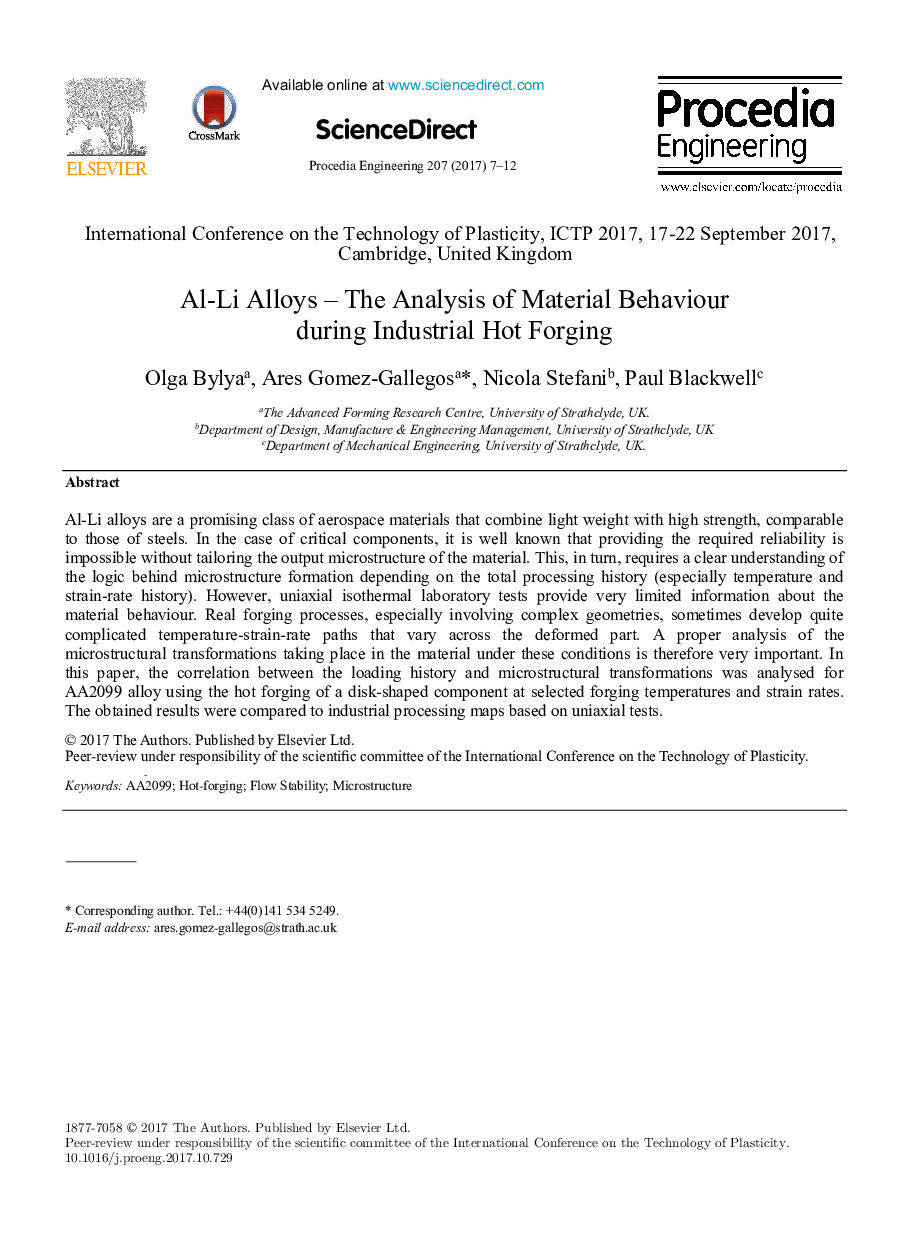| Article ID | Journal | Published Year | Pages | File Type |
|---|---|---|---|---|
| 7227001 | Procedia Engineering | 2017 | 6 Pages |
Abstract
Al-Li alloys are a promising class of aerospace materials that combine light weight with high strength, comparable to those of steels. In the case of critical components, it is well known that providing the required reliability is impossible without tailoring the output microstructure of the material. This, in turn, requires a clear understanding of the logic behind microstructure formation depending on the total processing history (especially temperature and strain-rate history). However, uniaxial isothermal laboratory tests provide very limited information about the material behaviour. Real forging processes, especially involving complex geometries, sometimes develop quite complicated temperature-strain-rate paths that vary across the deformed part. A proper analysis of the microstructural transformations taking place in the material under these conditions is therefore very important. In this paper, the correlation between the loading history and microstructural transformations was analysed for AA2099 alloy using the hot forging of a disk-shaped component at selected forging temperatures and strain rates. The obtained results were compared to industrial processing maps based on uniaxial tests.
Related Topics
Physical Sciences and Engineering
Engineering
Engineering (General)
Authors
Olga Bylya, Ares Gomez-Gallegos, Nicola Stefani, Paul Blackwell,
